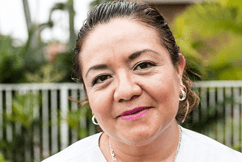If today, you moved and relocated to Italy, it would take you approximately 10 years to become acculturated as an Italian. Acculturation is the process in which an immigrant adjusts, or acculturates to the local culture, language, customs, traditions, etc. Becoming comfortable enough to maneuver life, such as registering the car, learning to drive on the opposite side of the road, shopping for amenities and groceries, and getting the kids into school with the proper vaccinations.
A Latino moving into the United States takes approximately 18-20 years to acculturate, predominantly due to technology and cultural appreciation. Technology permits maintaining closer ties to the home culture, where the immigrant remains engaged to the routine and habits of her native land; also, technology allows access and information in Spanish. Minimizing the need to assimilate and learn the language to get by in the United States. As for cultural appreciation, up till several months ago, there was a very inclusive and welcoming environment where Latino culture, customs including food and music where sought and enjoyed.
The process of acculturating, or the acculturation spectrum and where an individual lies on this spectrum drives how they respond to messages and outreach. For instance, if you are still learning how to read/write Italian, an insurance carrier or auto dealer advertising in an Italian-dominant TV/radio/newspaper/website will be ineffective in engaging you as a client.
Effective segmentation based on acculturation is one of the most important strategies in engaging Hispanics today.
For years, traditional marketers have executed predominantly a total-market strategy with some progressive marketers investing into ethnic markets, segmenting for acculturation. Meaning, everyone received the same message, same stock photography with same working. Assuming the audience was exactly the same, i.e. All white or African American.
Why does this matter?
It matters because of the changing demographics. I often refer to the 2010 Census and the 2016 population estimates, reflecting that there are 57 million Hispanics in the U.S and in Maryland, approximately 9% of the population is Latino. About 550,000 people. And remember that the data is old and the numbers are actually much higher, just walk around Patterson Park, Wheaton and even Frederick County to see the increased visibility of Hispanics residents, shoppers and visitors, not to mention other immigrant groups.
This is the opportunity for retailers, daycare providers and nursing homes just to name a few industries- If you need workers or customers, this is a segment worth pursuing.
The huge elephant in the room (or page) is the question of WHY DON’T THEY JUST LEARN ENGLISH? AND ASSIMILATE ALREADY? Like the Irish, Germans and previous individuals that migrated to the United States…
Why should anything be done differently for Hispanics and immigrants? That topic is being addressed with workforce development and education, but, my friends, that assimilation will take years, maybe a generation or two to be visible.
But what happens today? That’s a choice. YOUR choice.
From the perspective of business and sales, the answer is simply, Hispanics wield over $1.5 Trillion dollars annually- money that you, as a business, restaurant, retailer, manufacturer can attract.
From the perspective of society and social services, why modify anything to engage Hispanics? Well, one out of every 4 kindergarten is a Latino. One of out of 5 millennials is a Latino. This is our workforce. These are future teachers, doctors, police officers… And yes, they will speak English and they will be Americanized, but they still affiliate with their unacculturated or semi-acculturated family, neighbors and friends.
The opportunity to be inclusive, both as a business and as a society yield tremendous benefits.
I’m in full support of ensuring our neighborhoods and communities are safe, and yes, people should abide by the law, although the issue is not as one-dimensional as that. I’m not discussing undocumented immigrants, that’s a whole other topic. This column addresses the tremendous opportunity in our region to engage a new market and develop a future workforce.
As we know, the only change you can push is the change within. We cannot change others, we can certainly influence, empower and advocate, but individuals must choose their actions and behaviors.
I encourage you to explore a different culture, increase your cultural competence specially around folks hailing from different lands or backgrounds.
Till next time, Amigos.


